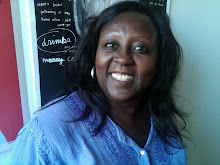
Last night I attended a super lecture at the Getty Museum called, Art as evidence: The scientific investigation of works of art. This was a well informed panel discussion with very interesting material to discuss. David Bomford, the associate director for the collections at the J.P. Getty Museum moderated the panel discussion that examined the impact of scientific analysis on how we understand, interpret, and care for art. The panelists were, Terry Drayman-Weisser, director of Conservation and Technical Research at the Walters Art Museum in Baltimore, Melanie Gifford a research conservator for painting technology in the scientific research department at the National Gallery of Art, and Chris McGlinchey, the Sally and Michael Gordon Conservation Scientist at the Museum of Modern Art, New York. These are heavy hitters in their fields. Each case presented was more interesting than the previous. It began with Ms. Drayman-Weisser who spoke about her work on Belgian reliquary shrines. She was interested in tracing the authenticity of the work from the origins to today. She asked questions like what makes the work authentic when there have been many visible changes to the shrine? Do the alterations lessen the authenticity? The next panelist, Ms. Gifford, talked about her work on Rembrandt paintings and determining the authorship of works. She showed a work where through infra red data you could see the original draft of the artist underneath the final painting. From there she compared the work of the student and made a determination. It was not the students work but the masters, Rembrandt. The final panelist, Mr. McGlinchey, spoke about his work on contemporary art pieces. He had been charged to determine if the current color of a work by Rothko was actually the original color or if it had changed over the years. He used XRF to examine the work and it turned out, it is the original color. This stuff was so interesting, sort of like CSI for art buffs. The more questions they answered, the more questions you had. They discussed many aspects of their work as conservators, their interaction with curators, scientist and collectors. Everyone seems to be looking for a different outcome and sometimes the result can leave each investigator at cross hairs. The final conclusion from the panel that all the conservators could agree on was, there is a need for new techniques in the treatment to stop deterioration of artworks. The old method of storing in cold does not work well with newer contemporary materials. The storage conditions and the reactivities and sensitivities of the works have to be taken into consideration.
GCI Photo: Dennis Keeley. Please follow the link for further information: http://getty.edu/conservation/public_programs/art_evidence.html

No comments:
Post a Comment